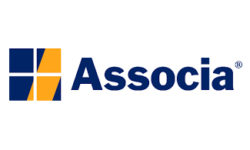How important is customer service in the community association management business? There’s no doubt that most would agree it is at the heart of what we do. The way our clients perceive that they are treated has a direct bearing on our client retention rate. Technology has always played an important role in the service we can offer to our clients. However, most would also agree that conducting business today is very different from the way things were done 20, 15, or even 10 years ago. We live and work in an age of sophisticated electronics, communication devices, and myriad other gadgets, all of which are useful. But, how do these items truly enhance our service to clients? In the blizzard of gadgetry and online services, how can we make sure that the basic premise of serving our customers is not forgotten?
24/7/365 Accessibility
Now more than ever, it’s extremely easy to contact people. Whether smart phone, tablet, email, Facebook, Twitter, there is a virtual flood of communication that we can choose (or choose not to) use. It has certainly added convenience to the once time-consuming task of making phone calls, leaving messages, and awaiting a return call. Yet, at the same time, it has diminished the value of any one form of communication. The impact of our communication is now at risk of being lost in the onslaught. Another result is that there are really no longer such things as “business hours.” Who among us hasn’t been guilty of checking email or texting a client after hours? People are contacting us at all hours of the day and night, whenever it is convenient for them. How do we create consistent customer service value in an environment where we’re always expected to be “on?”
Information Overload
One of the greatest technological advances to impact any field is the power and usage of the internet. When it comes to researching an issue or topic – case law, pending legislation, existing rules and regulations – the horizons are limitless. Anyone can tap into what is going on down the street, in other nearby communities, across the country, and around the world. The sheer amount of information available is incredible. While being a great resource for community management professionals, the internet is an equally powerful tool for homeowners. People outside of the community management business now have the ability to research, study, and scrutinize our business practices with unprecedented ease. While raising the bar for customer service, a good thing, it can also have the added consequence of fueling those who wish to stir up controversy.
Technology In Balance
Progress demands that we, as community managers, use the tools available to make our jobs easier and to improve the lives of our homeowners. It may seem like an easy thing to do, but in our rush to get things done, we can sometimes forget to remember that our responsibilities run deeper than completing our to-do lists with unprecedented efficiency. Don’t forget the basics of good customer service! Maintain a professional demeanor in your communications with clients. Listen with an open mind. Check your body language. Remember eye contact. Smile! These are the human qualities that we risk losing in the flood of technology. Remember that people come first! Here’s a basic one: respond to your e-mails, texts, and voice mail messages. This sounds like a “no brainer,” but sometimes we put off responding if we haven’t resolved the issue or gotten an answer to the question. Respond anyway! Tell the person that you are working on the concern and will get back to them soon. When you do respond, make sure your information is correct. Better to admit not knowing and promise an answer soon than to provide bad information.
Use Your Power For Good
In the end, the vast array of technology that we have at our disposal is only as good as the way in which we use it. Used incorrectly, it can leave our customers feeling cold and disconnected, as if the bells and whistles were an adequate substitute for human interaction and customer service. Used correctly, technology can enhance our already terrific customer service approach, and be used to build on the human connections we as managers have worked so diligently to build.

